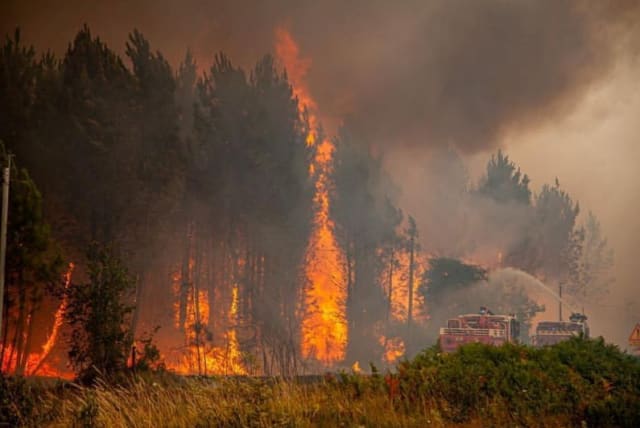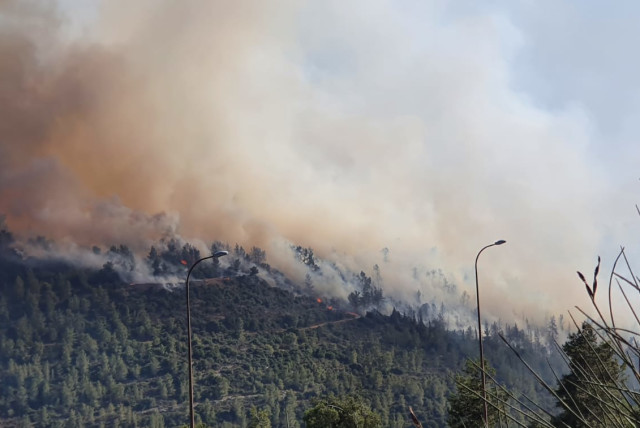In which areas are wildfires more likely to break out? - study

Prescribed fire used to control woody encroachments has spot-fire that covered less distance in comparison to wildfires, according to researchers.
A recent study has concluded that the threat of wildfire increases exponentially in wooded areas where there are trees and shrubs, as opposed to areas that only contain grass.
The peer-reviewed study, published in the journal PLoS ONE last month, was conducted by researchers from the University of Florida and also delved into the threat of "spot-fire distances," which describes the distance where embers from one fire can blow over via wind and ignite a new fire outside of the original fire perimeter. The study also notes the possibility that the location of a new fire caused by such a phenomenon could be "potentially far away from fire suppression personnel," making it more dangerous.
Researchers looked at the genus Juniperus, which "convert grasslands to an alternative woodland state," and assessed the differences and changes in grassy areas that have been intruded by the genus, and how spot-fire distances differ under typical conditions are different to that of conditions observed during a wildfire. They observed Juniperus specifically located at the Loess Canyons Experimental Landscape in Nebraska.
There, they used the BehavePlus, which is a "computer program that can be used for any fire management application that involves modeling fire behavior," according to the Fire Research and Management Exchange System (FRAMES).
“Spot fires are one of the most common reasons why houses burn in a wildfire,” said Victoria Donovan, a University of Florida forest management researcher. “It’s not typically because the flames from wildfire reach a house, but that embers from that fire land on roofs, travel through home ventilation systems, or land on other combustible material on or near the home, and ignite the house from there. They’re a big concern for structural damage.”
Fighting fire with fire
It was found by the researchers that prescribed fire used to control woody encroachments had spot-fire that covered less distance in comparison to wildfires, which corresponded with lesser amounts of land at risk of a spot-fire occurrence.
In extreme cases, in comparison to prescribed fire conditions, spot-fire distances were almost doubled in grasslands and tripled in encroached grasslands and Juniperus woodlands.
“Our study shows that the risk of spot fire is much lower when you’re burning under the weather conditions used for prescribed fire, regardless of encroachment phase, compared to waiting for the potentially more extreme conditions we can see during wildfires,” Donovan said, noting that these concerns should be universal no matter the type of land where wildfires occur.
The Environment and Climate Change portal is produced in cooperation with the Goldman Sonnenfeldt School of Sustainability and Climate Change at Ben-Gurion University of the Negev. The Jerusalem Post maintains all editorial decisions related to the content.
Jerusalem Post Store
`; document.getElementById("linkPremium").innerHTML = cont; var divWithLink = document.getElementById("premium-link"); if (divWithLink !== null && divWithLink !== 'undefined') { divWithLink.style.border = "solid 1px #cb0f3e"; divWithLink.style.textAlign = "center"; divWithLink.style.marginBottom = "15px"; divWithLink.style.marginTop = "15px"; divWithLink.style.width = "100%"; divWithLink.style.backgroundColor = "#122952"; divWithLink.style.color = "#ffffff"; divWithLink.style.lineHeight = "1.5"; } } (function (v, i) { });

